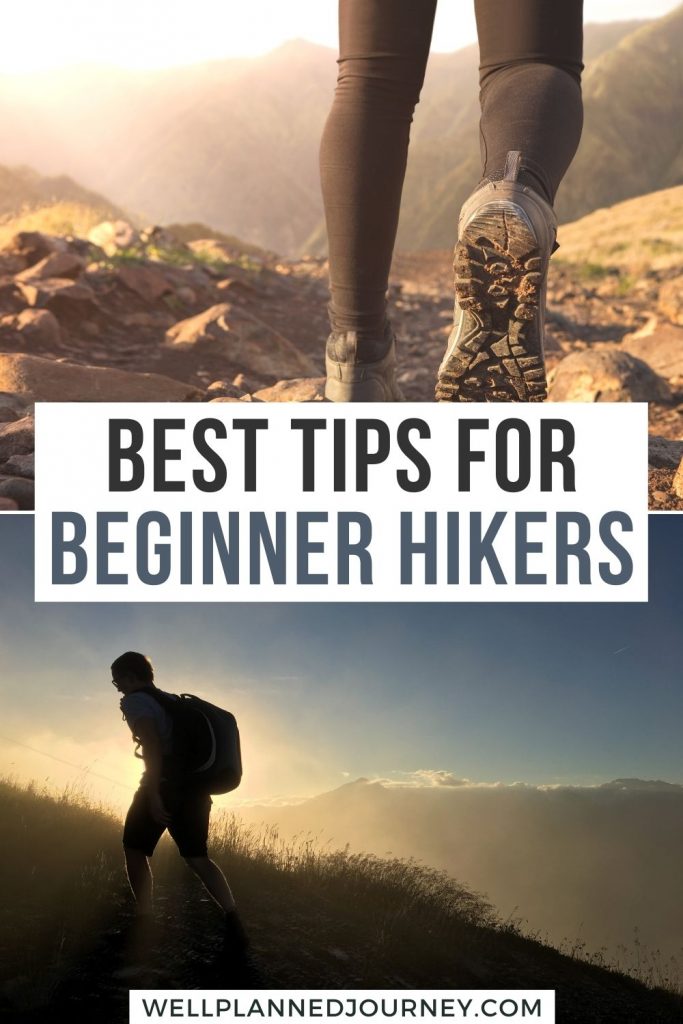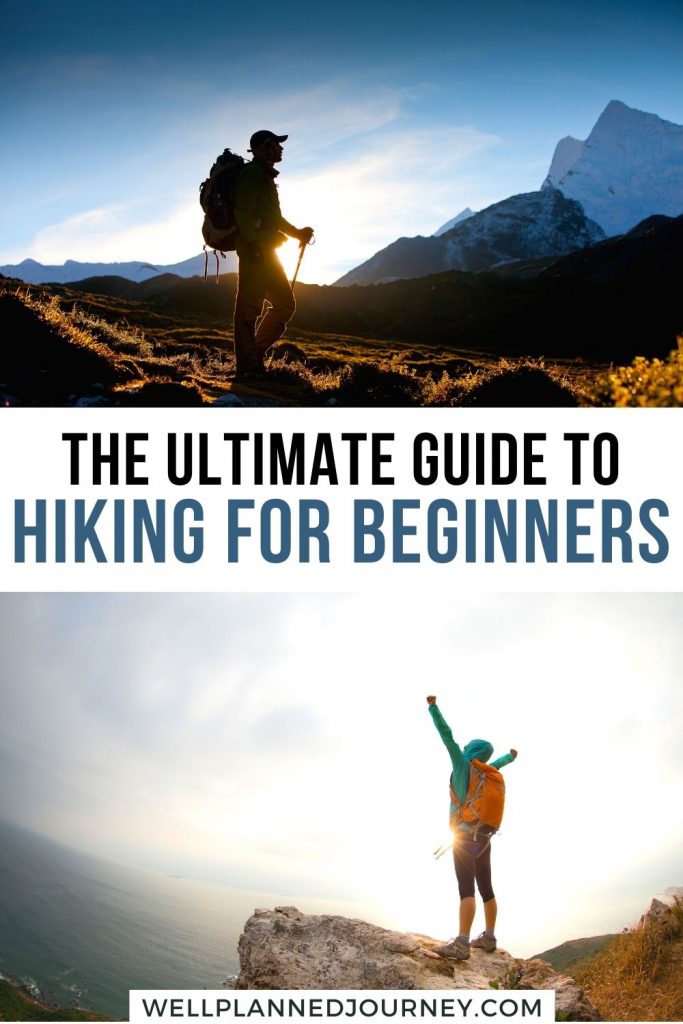Are you new to hiking and not sure where to begin?
Hiking is one of the absolute best ways to get outdoors. You can escape crowds and disconnect from technology. But hiking for beginners can be intimidating.
There are so many pieces: buying the right gear, picking a trail, finding hiking buddies, wildlife, and trail safety.
That’s why I’ve put together this no-BS guide to hiking for beginners. I’ll teach you how to find and train for hikes, what to pack and wear, and how to take care of yourself and our parks when hiking.
By the end of this guide, you’ll be able to conquer any trail and embrace the outdoors. And maybe you’ll fall as in love with hiking as I am!
Looking to grow your outdoor skills more? Check out these posts:
- What to Pack for Hiking: 44 Best Essentials for a Hike
- 12 Best Hiking Apps You Must Have in 2023
- 40 Best Gifts for Hikers in 2023
- 58 Insanely Useful Camping Tips for Beginners
- 10 Best Hiking and Camping Gear on Amazon
This post may contain affiliate links, where I may receive a small commission at no additional cost to you. Read more in this disclosure policy.
What is Hiking?
Before we dive into all the ways you can become an expert hiker, let’s start with the basics.
The definition of hiking is “the activity of going for long walks, especially in the country or woods”. Basically, any kind of walk that isn’t on a road or sidewalk is a hike.
Hikes can come in all shapes and sizes, so here’s a breakdown of the types of hikes you might hear folks talk about.
Types of Hikes
- Day Hiking is what most people are doing when they say hiking. A day hike is done in a single day (I know… pretty obvious right?). This can range from a quick 1-mile hike to an all day, 12-hour journey.
- Backpacking (or trekking) is a multi-day journey. Trips entail carrying your gear with you to spend the night in nature – including a tent! Backpacking trips can be as short as one night or for months at a time!
- Thru-Hiking is a type of backpacking that starts and ends at different locations. These trips tend to be longer, like the Appalachian Trail or the Pacific Crest Trail.
This guide focuses on day hiking – that’s my bread and butter! Day hiking is the perfect way to ease into outdoor adventures and build foundational knowledge.
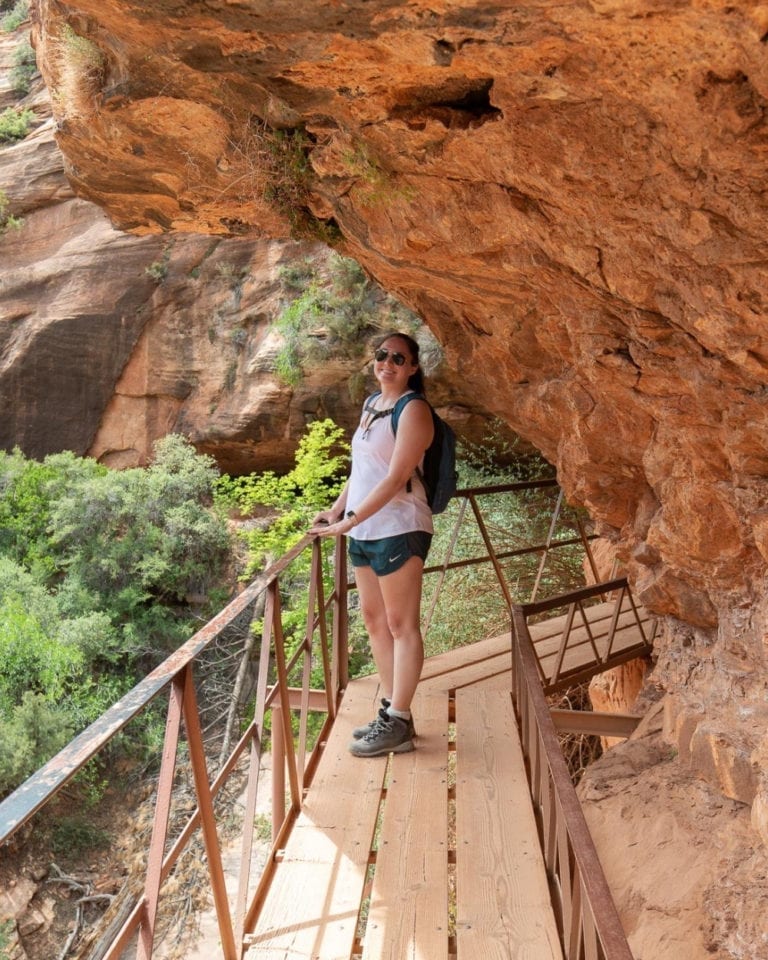
Hiking Guide to Finding and Choosing Beginner Trails
Before you can set out on a hike, you have to find the right trail! There are so many resources to help you find awesome trails in your area, particularly for beginner hikers!
- AllTrails is the most popular hike planning app with over 100,000 trails worldwide. You can search hikes based on difficulty, length, elevation gain, and route type. You can also search in ‘map view’ to find hikes close to you! AllTrails provides tips on getting to the trailhead, restroom facilities, and reviews from other hikers.
- Blogs are a great way to find hikes (okay, I realize I may be biased!). Bloggers are able to provide the first-hand experience that you won’t find in the guidebooks. Try searching Google or Pinterest for hikes near you (for example, “B
- est Beginner Hikes in the Bay Area”).
- Friends and family that already hike can be great resources! Ask them for trail recommendations, hiking tips, or even to join you on the trail!
Read More: 7 Best Apps for Hikers
What to Look for in Beginner Hiking Trails
When you’re first starting out, you’ll want to pick a trail that’s suitable for your fitness level. Hike difficulty is more than just distance.
You also need to consider elevation gain and weather. An easy trail in the summer can be much more difficult in the winter in icy conditions.
Understanding Elevation Gain
Elevation gain is not simply the difference between the highest point and lowest point on the trail. For example, a trail could start at 100 feet elevation and end at 100 feet elevation, but cross rolling hills along the way.
To get an accurate idea of the total elevation gain on the hike, add together all the uphill portions of the trail. Apps like AllTrails and most national/state park hiking trail maps do this for you.
As a beginner, I recommend looking for a trail that is under 5 miles with minimal elevation gain. Think about it like you’re on a treadmill: a 1-mile hike with 500 ft of elevation gain has an average grade of 10%.
Look for beginner hikes with less than 250 feet of elevation gain per mile.
If you’re an avid runner or walker, particularly in hilly areas, you may be able to handle a longer, harder trail as a beginner.
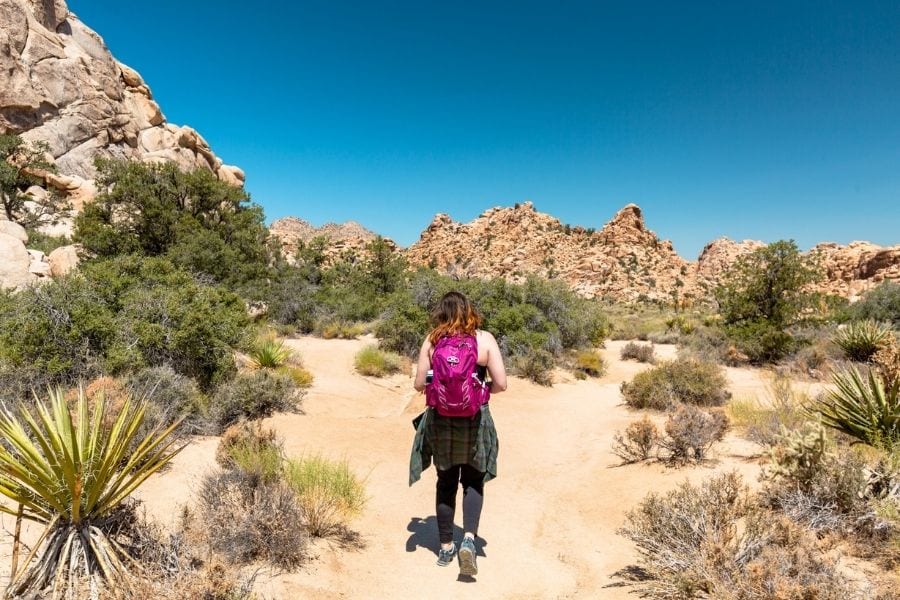
Tips for Choosing a Hiking Trail for Beginners
- Research seasonal constraints before picking a hike. Is the park open in the winter? Does the area get snow or flood? Make sure your trail is open and in good condition before you plan the hike.
- Check the weather before you go. Beginner hikes are most fun in sunny, warm conditions. Try to avoid hiking in rain, snow, or high winds.
- Make sure you have plenty of time to complete the hike. You don’t want to rush your hike. Spending time outdoors is supposed to be relaxing right? Pace yourself and allow time for breaks along the way. Avoid making plans or commitments immediately after your hike.
- Research any permits or logistics for the trail. Make sure the trail you intend to hike does not have any advance permit requirements or tricky logistics. The best way to read up on logistics for your hike is on the website for the park where you’re hiking.
- Read up on navigation and parking. Make sure you know where the trail starts and how you’ll get there. Some trailheads require an all-wheel drive vehicle or a hike to get to the trailhead! Be sure to read reviews on AllTrails or the park website about trailhead parking. Popular trailheads have competitive parking, so it’s always best to start your hike first thing in the morning!
How to Train for Day Hiking for Beginners
There’s plenty of physical activity you can do at home or the gym to prepare for hikes.
Heads up, I’m not a personal trainer. This is advice based on my own personal experience. It does not substitute for advice from a medical professional or licensed trainer.
- Walking or Running. Cardio is one of the best ways to improve your endurance for the trail. Increase your walking or running distance over time to prepare for your hike. Be sure to include elevation gain in your training. Find a hilly neighborhood or increase your grade on the treadmill. No amount of training on a flat sidewalk will prepare you for hiking rolling hills or mountains.
- Strength Training. Many beginner hikers make the mistake of only focusing on cardio when training for a hike. Building up your core and lower body strength improves your ability to climb hills and carry a heavy backpack. But you don’t need a gym to strength train. There’s tons of body weight core and full body workouts online!
- Yoga and Stretching. Flexibility is incredibly important when it comes to muscle recovery. Be sure to include stretching as a part of your cardio and strength training to improve recovery. Incorporating yoga at least once a week can improve your flexibility too.
- Easier Hikes. The best way to train for a difficult hike is on shorter or flatter trails. Prepare for your difficult goal hike by working your way up, growing both the distance and elevation of your hikes
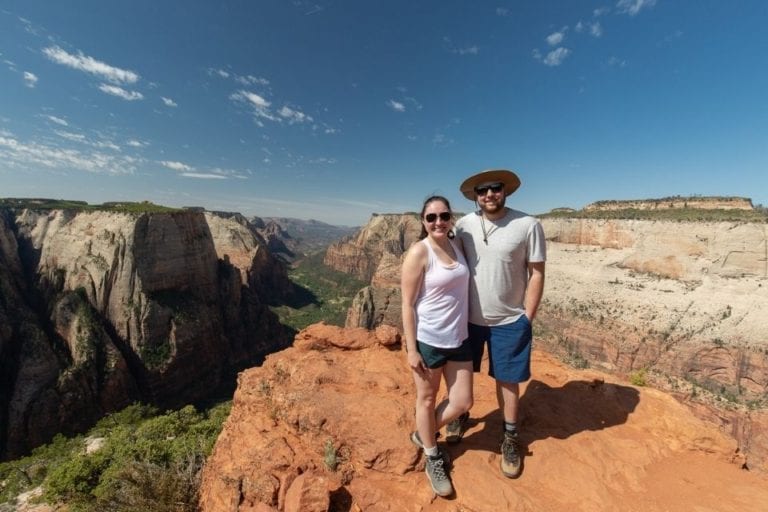
Tips for Finding a Hiking Companion
The easiest way to find hiking companions is to start with your current friend group or acquaintances. Do you know anyone that already hikes? Does your neighbor post awesome outdoorsy photos on Instagram?
Nearly every experienced hiker is happy to introduce beginner hikers to the outdoors.
If you don’t know anyone in your area that is into hiking, the internet can help you find hiking buddies! Start with Facebook groups – try searching ‘hiking groups near me’ in the Facebook search bar.
REI also offers outdoor skill classes and hiking meetups.
Are you planning a hike but aren’t sure what to pack? Get this free, printable hiking gear checklist. This guide covers the 30+ items you need for your next hike, from the 10 hiking essentials to the luxury items to enjoy your adventure.
Download the free hiking gear checklist here.
Hiking Essentials for Beginners
Not having the right gear was my single biggest fear when I first got into hiking. But it doesn’t need to be yours! All you truly need to get started hiking are a few essentials.
The Ten Essentials
The safety gear every hiker should carry is called the ‘The Ten Essentials’. These are compact, but life-saving items you should keep in your backpack in case of emergency.
- Navigation. For beginners, I recommend downloading a custom offline Google Map. I also recommend taking a photo of the trail map on your phone and packing a basic compass.
- Headlamp. Essential for hiking after dark, every equipped hiker should carry a headlamp with fresh batteries.
- Sun Protection. This comes in many forms, but as a beginner, bring a sun hat and sunscreen.
- First Aid. For short hikes, a small 1-2 person, off-the-shelf first aid kit is all you need. Be sure to take inventory and restock your kit before you hit the trail.
- Knife. In case of emergency, you should pack a small pocket knife. It’s also a good idea to keep a small roll of duct tape in your bag for emergency backpack or gear repair.
- Fire. Other emergency items include fire-starting equipment, in case you need to spend a night in the woods. Keep windproof matches and in your bag.
- Shelter. While incredibly uncommon, hikers can get stuck on the trail overnight. Be prepared to sleep outdoors by carrying a lightweight emergency bivvy. A bivvy is an ultra-compact sleeping bag/shelter.
- Extra Food. Bring more than just one granola bar in your backpack. Pack enough snacks to keep you full on the trail and a bit extra in case you were to get stranded overnight. For one person, I’d recommend bringing 3-4 CLIF bars.
- Extra Water. Bring more water than you think you’ll need. Pack at least 0.5L (16.9 oz) of water per 1 hour of hiking. If you’re hiking on a particularly difficult or hot trail, double the amount of water you bring. For longer hikes, I recommend investing in a hydration reservoir like the 3L Osprey Hydraulics Reservoir. This will allow you to carry more water with less weight.
- Extra Clothes. Weather can be unpredictable. You never know when rain or cold temperatures will strike. Stay comfortable by keeping a rain jacket or poncho in your backpack as well as a merino wool or fleece layer for warmth
Read More: 44 Best Gear for Hikers (What to Pack for Hiking)
A Durable Hiking Backpack
You’ll need a way to carry The Ten Essentials. As a beginner, you can use any old backpack (but avoid drawstring bags). Adjust the backpack to fit correctly and distribute the weight evenly.
As you become more experienced, consider getting a hiking-specific backpack, like an Osprey pack. These bags have superior suspension made for hiking and a mesh-lined back panel to improve airflow.
Looking for more tips on what to pack for your next trip? Check out my guides on the best hiking gear, what to pack for a road trip, and essential camping gear for all my favorite gear picks and tips to make packing for your trip a breeze!
Clothes and Hiking Gear for Beginners
All you need for your first hike is breathable clothing, extra rain and warmth layers, and a solid pair of shoes.
- Breathable Workout Tops. You don’t need anything fancy, or hiking-specific, when starting out. Any breathable workout top will do. Avoid cotton t-shirts that absorb sweat, becoming heavier as you hike. I love Old Navy’s Breathe ON tops.
- Lightweight pants or leggings. Pants are better for hikes than shorts, protecting you from scratchy brush, mosquitos, and poison ivy. But if it’s hot, I do opt for comfortable running shorts. Simply put, wear something comfortable that allows for plenty of movement. Avoid jeans and other heavy materials at all costs. My go-tos are the North Face Aphrodite 2.0 pants and Athleta’s Elation Leggings.
- Rain Jacket. A durable, waterproof rain jacket is one of the 10 essentials and can double as an extra layer on windy days. Look for a rain jacket that has Gore-tex (a superior waterproofing technology)! I have the REI XeroDry GTX rain jacket.
- Merino Wool or Fleece Layer. Materials like merino wool and fleece are the perfect odor-resistant warmth layers for hiking. My favorites are the Patagonia Better Sweater and REI’s Merino Wool Half-Zip.
- Hiking Shoes or Boots. As a beginner, you don’t need a pair of shoes dedicated to hiking. A pair of sneakers with good traction are enough. As you advance to rocky or unstable trails, consider investing in a pair of hiking boots. These will provide extra traction and ankle support, protecting you from injury. I swear by my Columbia Newton Ridge hiking boots! I’ve had them for over 3 years and just bought a new pair! Plus they are super affordable (only $70 on Amazon!).
REI’s store brand is the perfect lower-priced option for beginner hikers!
Read More: The Best Hiking Clothes for Women
How to Hike and Stay Safe on the Trail
Safety in the outdoors is all about being prepared. Here are some of the easiest ways you can stay safe when hiking:
- Carry a first aid kit. Part of the Ten Essentials, a first aid kit can help you bandage scrapes and treat more serious injuries until you’re able to seek medical attention.
- Leave your itinerary with a friend. Always make sure someone outside of your hiking group knows where you’re going and how long you’ll be gone. This doesn’t have to be someone local. Leave your itinerary with any friend or family member and have them contact the park service if they don’t hear back from you.
- Leave your itinerary in your car to aid search and rescue efforts in an emergency. Just write down your trail and the dates and times you expect to be gone on a piece of notebook paper. Place it in the glove compartment or console of your car. Park rangers will notice a stranded vehicle at the trailhead and search your car for your itinerary.
- Carry a map of the hiking trail. This doesn’t have to be a physical map (although that’s not a bad idea). Take a picture of the detailed map at the trailhead, if there is one. Download Google Maps on your smartphone to allow you to navigate without cell service. For the best level of detail, consider an AllTrails Pro subscription. AllTrails Pro allows you to access detailed hiking maps without cell service.
Wildlife Safety for Hikers
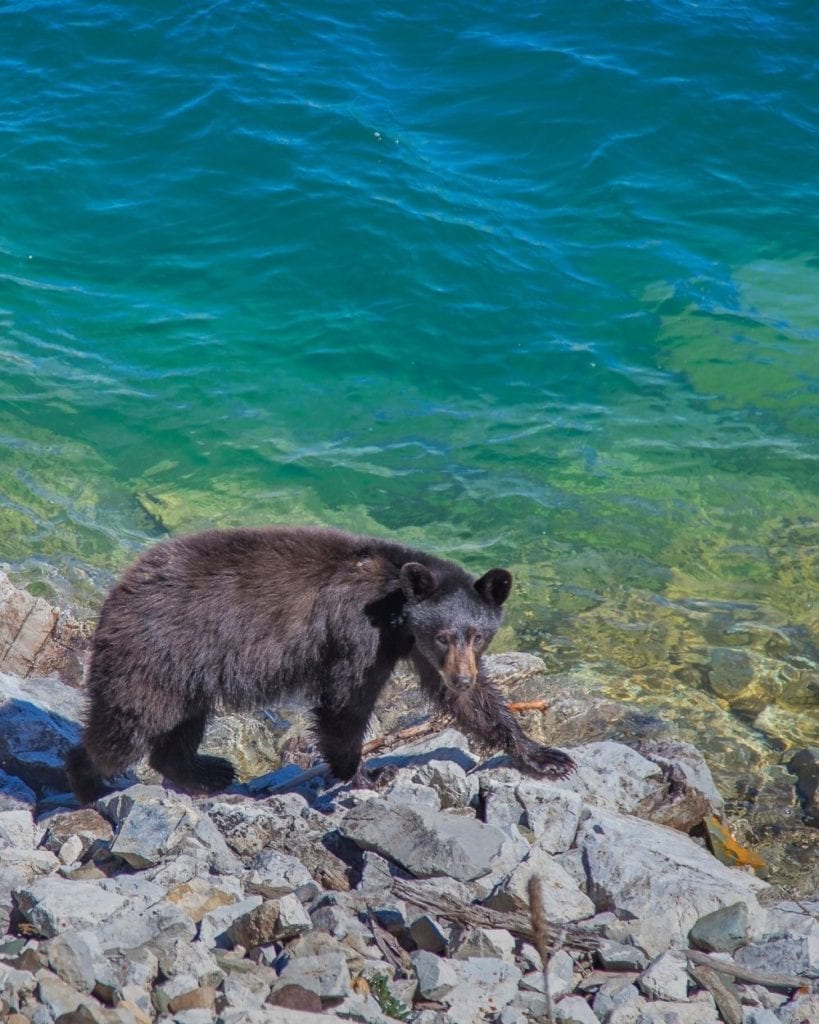
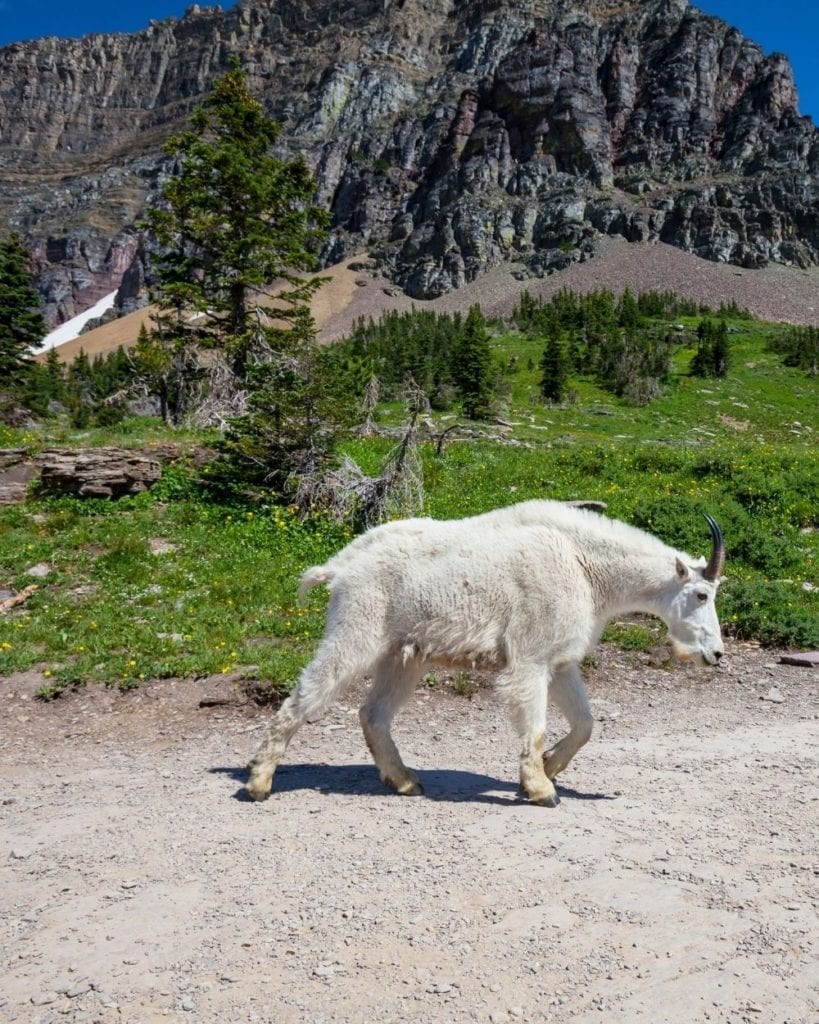
One of the more common fears among beginner hikers is encountering wildlife on the trail. But know this: most wildlife wants to avoid you.
Animals tend to steer clear of humans, but every now and then you may sneak up on or startle an animal – you’re in their home after all!
Here are a few tips to help you prepare for a wildlife encounter while hiking:
- Make noise while hiking. I’m not saying to blast music or scream at the top of your lungs, but have conversations or sing with fellow hikers (as silly as it might seem). This is particularly important in bear country. The human voice carries, helping animals locate you and stay away. The easiest way to avoid a surprise animal encounter is to let them know you’re coming.
- Give animals plenty of space. You should keep at least 100 yards away from bears and 25 yards away from all other wildlife. This includes seemingly harmless animals like deer and marmots. Leave animals alone and generally they will do the same.
- Stay calm and slowly back away if you do encounter an animal up close. Don’t turn your back, scream, or run if you encounter an animal. Remain calm and slowly give them space. Wait until the animal has left until continuing your hiking. For specifics on bear safety, check out Renee Roaming’s informative bear safety blog post.
Read More: 58 Insanely Useful Camping Tips for Beginners
Beginner’s Guide to Hiking Trail Etiquette
Nobody wants to look like a newbie hiker, right? There are a few basic rules when it comes to hiking.
- Follow the right of way. Just like on the road, hiking trails have right of way. Here’s what to do when you encounter others on the trail:
- Hiker vs. Hiker. The hiker going uphill has the right of way, unless they wave on the downhill hiker. This is common as uphill hikers want a breather, but remember that they have the right of way until they say otherwise.
- Hiker vs. Biker. The hiker has the right of way when encountering mountain bikers. But that said, it’s easier for the hiker to move out of the way than the mountain biker to slow their downhill momentum. If you see a downhill biker, just step off the trail to let them pass.
- Hiker vs. Horse. Horses have the right of way on hiking trails. If you encounter a rider on horseback, step off the trail. Be sure to give the horse plenty of room and avoid sudden movements that might spook the horse.
- Don’t scream or shout. Screaming and shouting means there’s an emergency on the trail. While it’s good to have conversations in your “outside voice” to alert animals you’re nearby, avoid screaming unless it’s truly an emergency.
- Don’t play music. Hikers venture out into nature to escape technology and everyday life, not hear your music. Leave the speaker behind and embrace the outdoors and the company of your fellow hikers
- Allow other hikers to pass when you’re stopped. Whether you’re taking a breather, water break, or stopping to take photos, allow other hikers to pass. Step to the side of the trail without squashing vegetation.
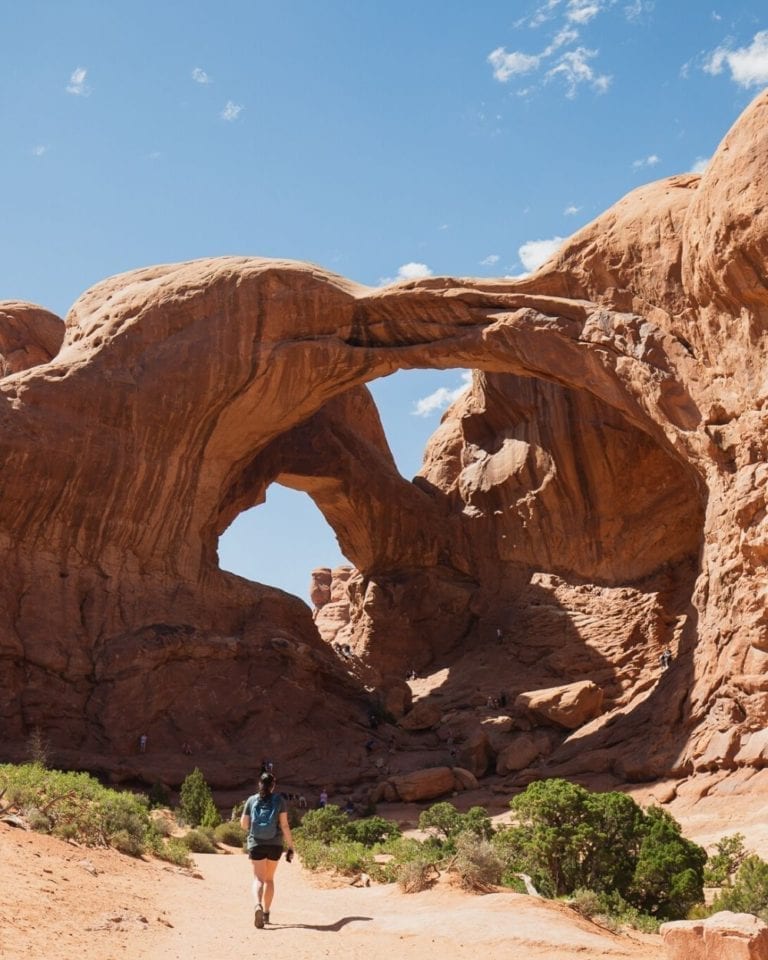
Learn the Leave No Trace Principles
Leave No Trace is an incredibly important set of principles for anyone who wants to enjoy the outdoors. The principles are intended to reduce human impact on the outdoors.
Leave No Trace helps keep our public lands beautiful and explorable for generations to come.
Every single beginner hiker should learn the Leave No Trace principles. It is your responsibility as a hiker to follow these rules and teach them to others.
Some of these have already been covered throughout this guide, like respecting wildlife and planning ahead.
- Plan ahead and prepare. Know the area and the regulations before you hike. Follow the rules of the park. Avoid hiking during inclement weather that may require search and rescue efforts. Visit in small groups and avoid hiking during crowded times. The easiest way to follow this principle is research your hike beforehand and start your hikes first thing in the morning.
- Travel and camp on durable surfaces. Always stay on established trails. Don’t hike off-trail to get a cool photo or scenic view. If you’re camping, find a place that has been previously camped on.
- Dispose of waste properly. Pack out what you pack in. Take all trash with you, including food waste like orange peels and seeds. These foods are not native to the area and harm animals. When you gotta go, bury all poop in a small 6-8 inch hole (not necessary for pee). It’s also essential to pack out all toilet paper and any feminine hygiene products.
- Leave what you find. Don’t take anything home with you. This includes sea glass, rocks, and wildflowers. Leave nature in nature.
- Reduce campfire impacts. If the recent wildfires have taught us anything, it’s that fires can start quickly and cause massive devastation. Avoid starting fires during the dry season and if you do, only start a fire in an established fire pit or ring. A safer alternative is using a propane-based cooking stove instead. Buy firewood locally to avoid introducing pests and diseases into the environment.
- Respect wildlife. Keep your distance from animals when hiking. Store your food properly, especially when in bear country, to keep animals out. It’s also important to keep your pets under control and on leash when on trails with active wildlife.
- Be considerate of other visitors. Hiking is supposed to be a relaxing hobby. Follow trail etiquette and be kind to other hikers. Don’t play music and keep your dog away from others (unless of course they ask to play!).
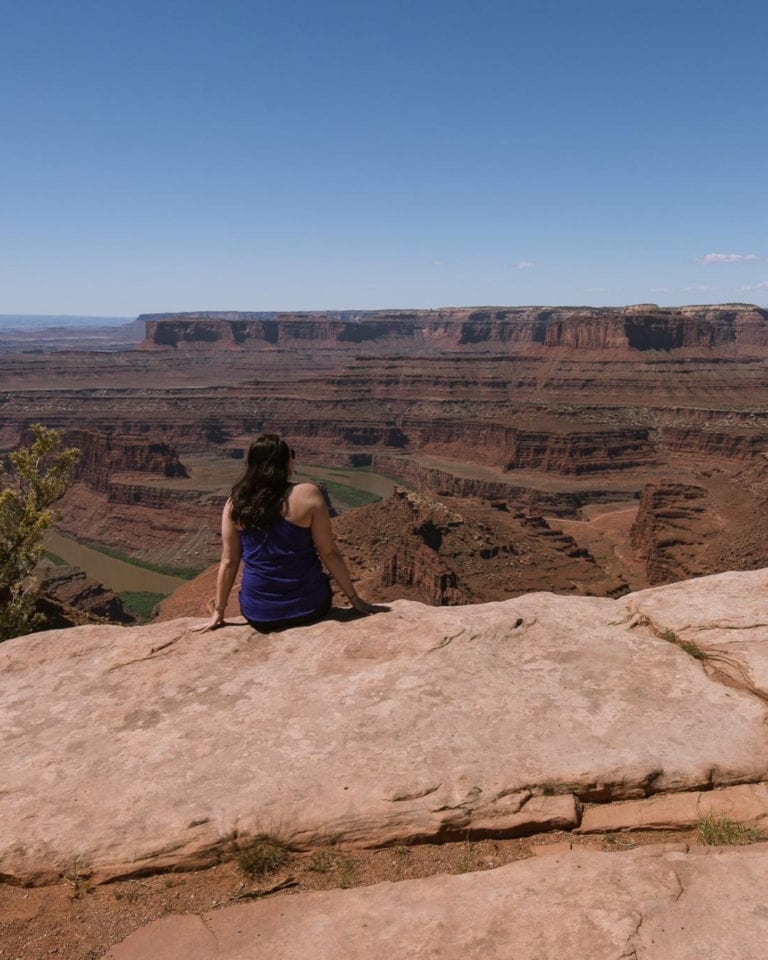
Frequently Asked Questions About How to Start Hiking
What should a beginner take hiking?
Beginner hikers should bring at a minimum:
1. The 10 Essentials (important safety and survival gear)
2. A sturdy backpack
3. At least 0.5L of water per hour of hiking
4. Durable hiking shoes with good traction
5. Breathable tops and long, lightweight pants. Avoid cotton and denim.
What are 3 things a beginner hiker should know before starting?
Before going on a hike, you should research your trail. Make note of things like hike distance, elevation gain, difficulty, and trailhead. Read up on park regulations and make sure your bag is packed with the ten essentials. Don’t forget to check the trail conditions and weather and leave your itinerary with a friend!
What should you not do while hiking?
Don’t play music or disrespect the environment. Following the 7 Leave No Trace principles can help you keep the land clean and protected. It’s also important that you never show up to a hike without a plan. Make sure you’ve properly researched the trail, know your limits, and have an emergency plan.
What is the first rule of hiking?
The first rule of hiking is to pack the right gear. The 10 essentials are the most important gear to pack on every hike, like navigation, extra water and food, and layers.
How many miles should a beginner hike?
Beginner hikers should plan to hike up to 5 miles on easy trails. As you get more experienced, you can work your way up to either more distance or to harder difficulty.
Final Thoughts on Hiking for Beginners
Hiking is one of the best ways to experience the outdoors and can be extremely therapeutic and rewarding. With a little practice and following these tips, you’ll be ready to conquer even the most challenging trails!
Looking to grow your outdoor skills more? Check out these posts:
- What to Pack for Hiking: 44 Best Essentials for a Hike
- 12 Best Hiking Apps You Must Have in 2023
- 40 Best Gifts for Hikers in 2023
- 58 Insanely Useful Camping Tips for Beginners
- 10 Best Hiking and Camping Gear on Amazon
Are you planning a hike but aren’t sure what to pack? Get this free, printable hiking gear checklist. This guide covers the 30+ items you need for your next hike, from the 10 hiking essentials to the luxury items to enjoy your adventure.
Download the free hiking gear checklist here.
Don’t Forget to Save This Post on Pinterest
